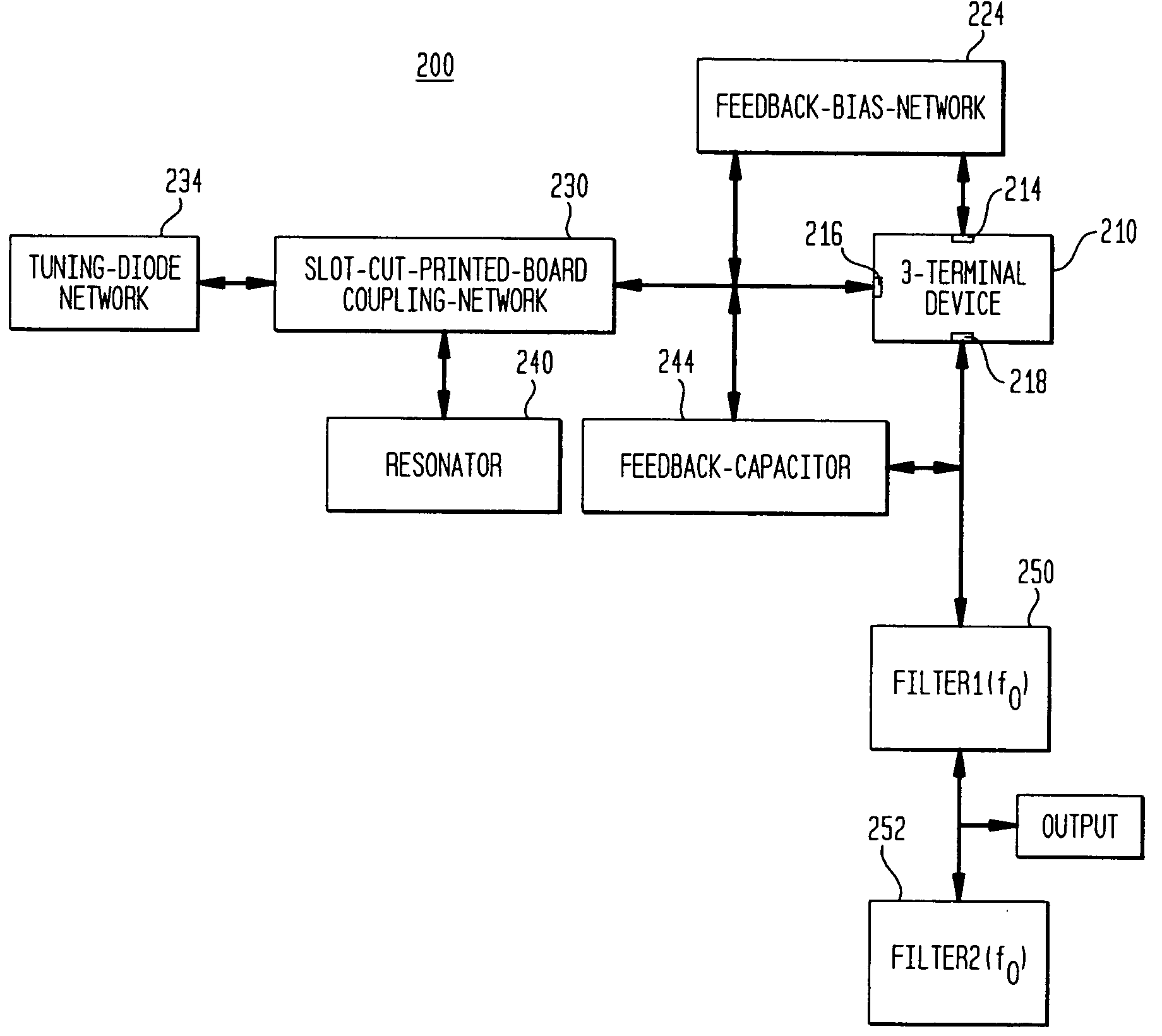Low thermal drift, tunable frequency voltage controlled oscillator
a tunable frequency voltage and control technology, applied in pulse techniques, oscillator generators, semiconductor/solid-state device details, etc., can solve the problems of limiting or affecting the performance of the pll itself, and affecting the performance of the device in which the pll is employed
- Summary
- Abstract
- Description
- Claims
- Application Information
AI Technical Summary
Benefits of technology
Problems solved by technology
Method used
Image
Examples
Embodiment Construction
[0043]FIGS. 1A and 1B depict circuits that illustrate a tuning diode using resistors, capacitors and inductors. As shown in FIG. 1A, a tuning diode may be depicted as a two-port device (as shown, ports 1 and 2) having a resistor Rs connected to port 1 and in series with an inductor Ls. Rs and Ls are connected in series to resistor Rp and a variable capacitor Cj, which are in parallel with each other. Cj reflects the junction capacitance of the tuning diode and is variable in response to temperature changes. The circuit further includes a capacitor Cc in parallel with Rs, Ls and Cj between ports 1 and 2 and an inductor Ls, between port 2, Cj, Cc and Rp, as shown.
[0044]FIG. 1B shows a simplified equivalent circuit of a tuning diode and includes resistor Rp in parallel with capacitor Cc. The capacitor Cc is also in series with resistor Rs.
[0045] With reference to FIGS. 1A and 1B, the expression for the junction capacitance of the tuning diode under a reverse bias condition is given b...
PUM
 Login to View More
Login to View More Abstract
Description
Claims
Application Information
 Login to View More
Login to View More - R&D
- Intellectual Property
- Life Sciences
- Materials
- Tech Scout
- Unparalleled Data Quality
- Higher Quality Content
- 60% Fewer Hallucinations
Browse by: Latest US Patents, China's latest patents, Technical Efficacy Thesaurus, Application Domain, Technology Topic, Popular Technical Reports.
© 2025 PatSnap. All rights reserved.Legal|Privacy policy|Modern Slavery Act Transparency Statement|Sitemap|About US| Contact US: help@patsnap.com



